Tag: home renovation technician school

As a home renovation technician, you’ll be responsible for taking homes to the next level by handling a variety of projects, including painting, carpentry, plumbing and more. Whether it’s your own home or you’re completing a project for a client, it will be important to stock up on the proper tools to get the job done right.
Home renovation can be tricky at times. By equipping yourself with the tools you need, you’ll be able to successfully complete any project while keeping in line with building codes and safety regulations. In addition to safety gear such as a hard hat, safety glasses, respirator, and gloves, you’ll need at least five different types of tools including electrical tools, hand tools, carpentry tools, plumbing tools, and painting tools. Below, discover more details about each of these tool types!
1. You’ll Need an Assortment of Hand Tools
After completing your home renovation training, it will be important to carry a few different hand tools at all times. First, you’ll want a tape measure to ensure that you’re working with the right dimensions. You’ll also want a screwdriver (preferably a multi-bit one), and a variety of screws to go along with it. Additionally, it’s important to carry a few different hammers with you at all times. A carpenter’s hammer is convenient when it comes to woodworking projects, and a sledgehammer is essential when completing the demolition stage. Lastly, you’ll want to have some pliers on hand, as these will help you to fix and place wires and other smaller objects.
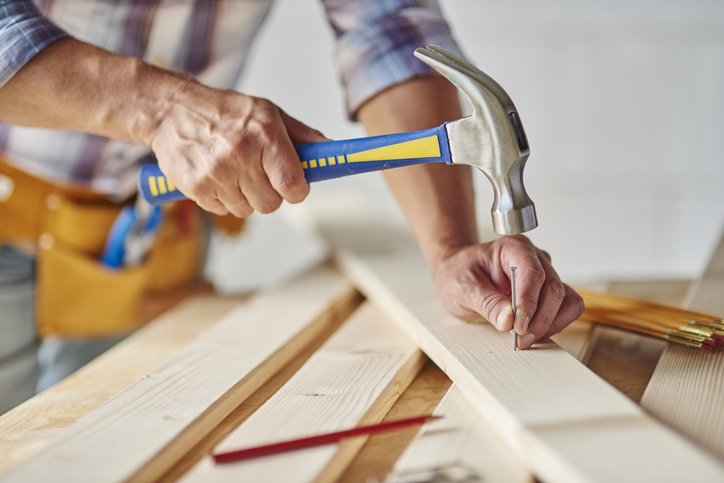
2. Carpentry Tools Will Help You Cut and Frame
When conducting carpentry projects, there are a few different tools that will enable you to complete the job in a clean and efficient manner. During your career, it will be beneficial to have a saw on hand at all times. In addition to a handsaw, consider investing in a motorized circular saw–as this will speed up the wood cutting process. Saw horses are also essential tools when it comes to staying safe while cutting plywood or lumber. If you’re working on a framing project, you might want to bring along a rafter square, as this will help you to determine the right layout. Finally, it will be impossible to know whether you’re cutting or fitting two pieces together without a level–so be sure to always have one on hand!
3. Plumbing Tools Are Helpful to Have on the Job
Once you become a home renovation technician you’ll probably have to navigate a few plumbing projects–especially when working on a home’s kitchen or bathroom. In order to successfully complete any plumbing job, you’ll want to have a: pipe cutter, sandpaper, and propane torch in your tool box. A pipe cutter will enable you to work with different pipes and shape them to the right size, while both sandpaper and propane torch are used to make new connections between pipes. In the case of leaks, it’s also helpful to carry some duct tape with you–as this can be used to quickly and safely seal any holes to prevent water damage from occurring.

4. Those in Home Renovation Training Can Expect to Use Electrical Tools
Every home renovation technician needs a few different electrical tools. The most important electric tool to have on hand is a cordless drill. This will help you to avoid the pain of using an extension cord when drilling needs come up on various projects. Additionally, if you’re working with wires, using a circuit tester allows you to ensure that no wires are live. This lets you quickly ascertain safely before moving forward with a project.
5. Finish the Job Up with Painting Tools
Painting is typically the last step in the home renovation process. While you don’t need too many heavy duty tools to give a surface a fresh coat of paint, there are a few handy tools that will make your life easier. First, you’ll want an assortment of tarps to put on the ground to catch any drops of paint that fall. You’ll want a sanding block to smooth out smaller surface areas. If you want to ensure a quality paint job, it’s also important to carry a set of high-quality rollers and paint brushes. One final tip: when it comes to painting corners and tight spaces, having a short-handled brush and an angled brush on hand is always useful.
Now you know what key tools you’ll need to have on hand to succeed as a home renovation technician. Depending on the project, you may want to carry some or all of these tools with you at all times!
Ready to enroll in home renovation technician school?
Launch your career with a program at the North American Trade Schools.
An Intro to Staircase Installation for Students in Home Renovation Technician School
April 22, 2021
Staircases serve an important function in any home with more than just one floor. Stairs are necessary for moving from one level of the home to another, and they’re often heavily trafficked as a result. When renovating a house, there are many important factors to take into consideration before installing a staircase. Designs can take a variety of shapes and sizes, and there are advantages and disadvantages to the different types of staircases, as well as the materials used. If you’re interested in a career as a home renovation technician, read on to discover what you’ll need to know before installing a staircase.
Useful Staircase Terminology for those with Home Renovation Training to Know
There are a few different terms that are useful to know if you’re embarking on a staircase installation project. First, a riser refers to the section between two stairs. A riser’s height is typically in between 5 and 8 inches. A tread is the term used to describe the horizontal section of a staircase where a person steps—the width of which can vary, depending on the user’s preferences. Headroom refers to the space between a stair and the ceiling above. Building codes will dictate the requirements for the headroom’s height, but it’s usually around 6’8”.

The stringer supports the treads and risers. Finally, the handrail—also known as the railing—is the beam that runs parallel to the staircase to provide balance for those using the stairs. Together, all of these components make up the staircase. If you’re in home renovation technician school, read on to discover how these components can be used in different ways to create a variety of staircase types.
An Overview of Staircase Types
The simplest type of staircase to construct is a straight stairs design. These stairs only need to be connected at the top and the bottom, without requiring additional support in the middle. If there are less than 16 risers, it’s also not necessary to install a landing along with the stairs— making construction relatively straightforward. Another common type of staircase is an L-shaped staircase. Within an L-shaped staircase, a landing marks a change in direction between two sets of stairs, often creating a 90 degree angle. L-shaped stairs are great for installation in the corners of a room, but the work to build them can often be more strenuous for home renovation pros.

Although spiral stairs are less conventional, those with home renovation training may be required to install this type of design at some point in their career. Spiral stairs are more compact, and consist of treads attached to a central pole, radiating out in a helical arc. While these stairs require more careful attention from users when ascending or descending, their interesting design makes them a great option for a modern home.
Use These Materials When Constructing Staircases
When selecting the material you’ll use for a staircase, it’s important to keep in mind: how much the stairs will be used, who will be using the stairs, and what kind of aesthetic you’re going for. Wood is a popular option for use in a staircase. While it’s trickier to install, it can be a great option for high-traffic areas as it’s often more durable. If strength and durability is the goal, concrete or natural stone can be used to construct a staircase—although these materials are most often reserved for staircases on the exterior of the home. Lastly, steel or metal can also be used in the construction of staircases, as these materials are both lightweight and low maintenance.
Want to become a home renovation technician?
Launch your career with the North American Trade Schools today!
Taking Home Renovation Training? Here’s How to Handle Mold Discovered on a Reno
February 02, 2021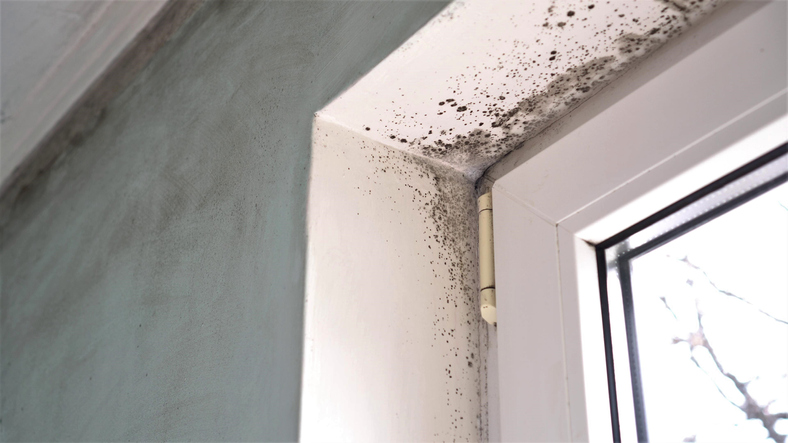
During a home renovation project, it’s not uncommon to discover a few “fun” surprises. Ripping up a floor or tearing down a wall is not only an opportunity to give a home a new look—it’s also a chance to make sure there’s no mold hidden out of sight and causing harm.
When mold is discovered, it’s important to address it right away. Left untreated, mold can become a serious health hazard to those who have it in their homes. In fact, it’s known for causing respiratory problems, immune disorders, allergies, and more. If you’re interested in becoming a home renovation technician, here are some tips on identifying and dealing with a mold situation, and how to prevent mold from occurring in the future.
If You Have Home Renovation Training, Here’s Where Mold Is Likely to Occur
Mold is most likely to grow in places where there is excess moisture. When renovating a home, make sure to check carefully for any leaks, condensation, or general moisture within the walls or floors, as these spots will be prone to mold growth. After your home renovation training, be sure to thoroughly examine a home for water damage or condensation during the renovation process, because where there’s moisture, there could be mold.
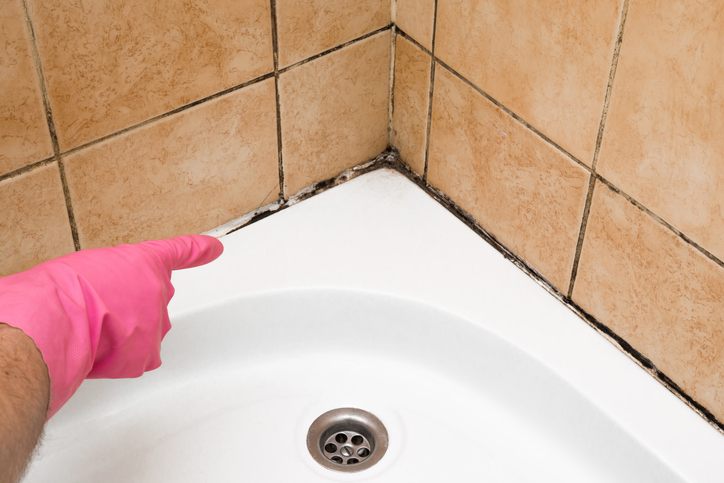
You Found Some Mold: Now What?
So you’ve discovered mold—what’s next? Whatever the quantity, mold should always be removed. While a little bit of mold might not pose a threat, there are certain types of mold that can be dangerous to our health, so it’s good practice to deal with mold as soon as it’s identified. Upon encountering mold, determine how much mold there is and what colour the mold is. If there are large spots of mold (bigger than your hand), the removal process may be more intense, and it might be best to call in a mold professional. Additionally, if the mold is black in colour, this could indicate the presence of black mold, which is toxic and should be removed by a professional remediation company.
Preventing Mold from Reappearing During Your Home Renovation Career
If you want to become a home renovation technician, remember that it’s a good idea to be prepared to encounter mold while on the job. Make sure to have protective equipment on hand, such as goggles, gloves, and an N-95 or P-100 respirator.
Of course, what’s even better than removing mold is preventing mold from occurring in the first place. Mold is sneaky, and preventing any possibility of re-growth is essential, especially while renovating a home. You wouldn’t want to put in a new floor over an area that has a chance of developing mold again. In order to remove the possibility of mold resurgence, make sure that the area is completely dry. A dehumidifier can be helpful here. Additionally, consider sealing off the area with a sealant such as shellac before continuing with the renovation, which will discourage mold growth.
Are you ready to enroll in home renovation technician school?
Explore the program options available at the North American Trade School today.
What Students in Home Renovation School Should Know About Spray Booth Painting
December 31, 2019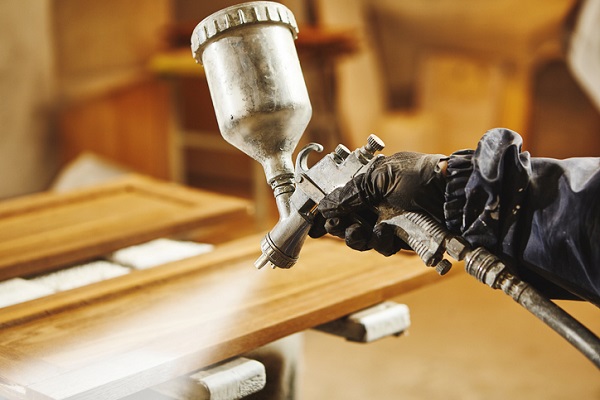
Spray booths are widely used in the automotive industry for painting cars. They’re also very useful in home renovation, when working on paint jobs that need to have a smooth, flawless finish. These booths aren’t just for classic spray jobs—you can also use a paint booth to apply lacquer or glaze, or for shading and faux finishing.
When you are working in clients’ homes, you want to work as neatly and cleanly as possible. Dust, debris and spills are undesirable when people have you in their houses, as you want to make your presence as easy as possible for them to live around. This cleanliness also applies to surfaces you are painting. Read on for more about why you should know about these handy booths if you’re going to work in home renovation!
Isolating Paint Jobs After Home Renovation School
When you are working on a paint job such as a door or trim, you don’t want any of the dust and dirt from working on other parts of the home to stick to the paint. This can create an uneven, gritty surface and take away from the smooth, professional finish you want. A booth allows you to separate the paint job from the surrounding environment, so that particles can’t blow onto the project and settle.
If you’re in home renovation school you might be looking to pursue a career in the field, or you may be most excited about doing your own home projects with a professional level of skill. If you’re working on your own home, you surely want to do the best job you can when reviving the space. Keeping clean can make the difference between a very DIY look and the stuff of pros.
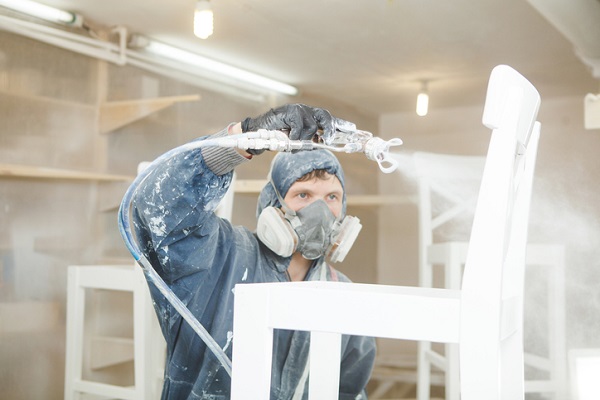
Students in Home Renovation School Should Know How Airflow Works
The flow of air in a spray paint booth affects the quality of the paint jobs done inside of it. Air runs into a paint booth through a filter, so that the space is not contaminated by debris or dust from other work on the site. It then flows out through an exhaust area and rids the space of flammable fumes. This allows for the job to continue safely without any issues with regards to safety.
The ventilation in a booth prevents spray from escaping into the exterior of the booth. It also makes jobs more efficient—overspray, or suspended particles settling and painting areas that aren’t meant to be painted, is a concern during jobs. Well-ventilated paint booths will carry the overspray away from the cupboard door or tiles you are painting and not allow it to land on top of the project.
Why Lighting Matters in Spray Paint Booths
If you’re in home renovation technician school, you probably already know the importance of lighting projects well so that you can see your work. When you are working in a booth, you will require lighting that doesn’t cast shadows over the job, so that you can judge evenness and quality of the surface. You may also need to match colours while you paint, in which case light should adequately allow you to do this.
For painting, you need to be able to clearly see the wet edge on the item, so lighting has to show the surface of the project where the coating makes contact with it.
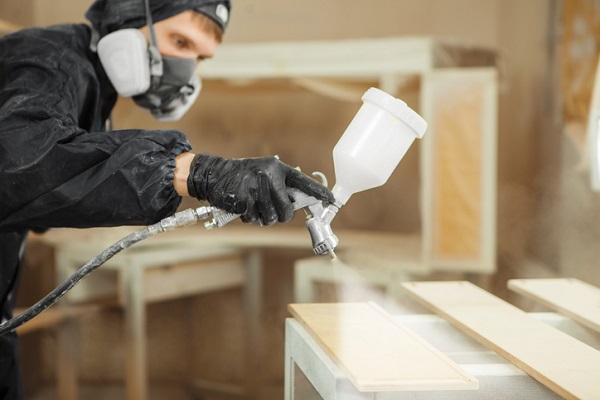
Are you looking for home renovation technician training?
Contact North American Trade Schools for more information.
3 Reasons Carpentry Assistant is a Great Career After Home Renovation Technician School
October 15, 2019
If you’re hard-working, love challenges and love working with your hands to get projects done, then becoming a carpentry assistant could be the right career choice for you. The field of home renovation covers various different crafts and trades, and carpentry is one of the most interesting among them.
In fact, working as a carpentry assistant has many advantages depending on what you are looking for in a job. Here are three reasons why becoming a carpentry assistant is a career path worth pursuing after your home renovation technician studies.
1. Carpentry Assistants Get to Tackle a Variety of Tasks
As a carpentry assistant, you might find yourself helping more experienced carpenters in performing a variety of tasks, such as safely using various tools, reading blueprints, and taking proper measurements. In certain carpentry assistant roles, you may also be expected to take care of duties such as ensuring that facilities are kept clean and machines are properly serviced, gathering and storing construction materials in shops or at construction sites, and helping to ensure that the worksite is kept safe for everyone. You may also be tasked with various drilling, cutting, planing, and other types of jobs with wood, lumber and paneling. This type of job can help give you plenty of experience in the carpentry trade after you’ve studied how to become a home renovation technician.

2. You Can Work on a Schedule That Isn’t the Typical 9 to 5 Day
Schedules can vary significantly in carpentry. Sometimes you can expect to find yourself starting the day around dawn, and working into the evenings to make sure projects can be completed in a timely fashion. That can mean more money in your pocket at the end of the day. At some places, you may work a short work week of just 4 days, while the workdays themselves will be longer. In other words, you can get a long weekend every weekend in those situations! Additionally, because of extenuating circumstances like project delays or weather, the length of the work week and work days can change with little notice. While that sort of schedule doesn’t work for everyone, if you’re someone who wants to avoid the monotony of the typical 9 to 5 workday, then working as a carpentry assistant could be a great choice.
3. Your Home Renovation Technician Training Could Lead You to Various Work Environments
You’ll learn a lot about carpentry during home renovation technician training and you will afterwards be able to take those skills and apply them in different work environments. On some projects, those working in carpentry could find themselves working on construction or remodeling projects with residential homes or commercial offices. Carpentry assistants are also required on big projects, such as highways, bridges, and ships. You may be surprises to learn that carpentry assistants are also found on film and television shoots, as those projects need carpenters and assistants on hand to help build sets and take care of various maintenance duties. Whatever the project may be that you work on, it’s clear that a career in carpentry can take you down many interesting paths.

Want to attend home renovation technician school?
Contact North American Trade Schools to learn more!





